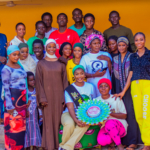
Two gods, in the theatre of Greek myth, embody the eternal struggle between order and chaos. Apollo, is the guardian of balance and reason and Dionysus, is the herald of frenzy and abandon. In 2025, Ghana’s economy has become a stage for this ancient drama. The steady, rational hymns of fiscal restraint now vie against a growing Dionysian chorus, one that threatens to drown out the central bank’s careful rhythm with the clamour of immediate desires.
This, unambiguously, is no light technical meeting of fiscal and monetary minds as it has the fraught air of a high-stakes ritual, one whose outcome will either bless or curse the year to come.Apollo’s discipline, manifested in tightened expenditure, consolidated debt and measured rates must perform in harmony with the Bank of Ghana’s vigilance. Unfortunately, like Dionysus at the gates of Thebes, temptations of excess spending, populist subsidies and untethered flows press for entry, ready to turn symphony into revelry.
The tale of 2025 will not be written in Olympus, but in the quiet rooms where Ghana’s future is bartered and bound. If Ghana’s custodians hold to Apollo’s measured tempo, the land may hear renewal’s harmony, steady as the Atlantic tide. But should they yield to Dionysus’ fevered call, the rhythm will falter into discord, scattering fragile notes of recovery like dust before the Harmattan wind.
In this article, I am moved to cast this reflection in the imagery of Greco-Roman myth as Ghana’s struggle for economic balance feels like a drama the ancients would have known by heart. It is simply the eternal contest between Apollo’s lyre and Dionysus’ thyrsus, between reason’s harmony and passion’s call. In the country’s chambers of policy, budgets and rates are no sterile equations. Nay! They are instruments in this living struggle and each choice a test of judgment, courage and the nation’s resolve.
Apollo’s Overture to a Balanced Budget
The government of Ghana, by its own mid-year account has made visible headway on the public purse. As of June, 2025, the overall fiscal deficit (commitment basis) stood at 0.7% of Gross Domestic Product (GDP), outperforming the target and marking a tightening path against recent years. The primary balance moved into surplus, showing that revenue measures and expenditure restraint are beginning to bite.
However, this arithmetic does not have a scent of a gentle stroll across Parnassus. It is a steep climb through rocky terrain. Revenues are projected at GH¢223.8 billion (17.2% of GDP) for 2025, up from GH¢186.5 billion in 2024, a sharp mobilization effort. Current expenditures are being held in check, though capital spending remains the perennial pressure point of politics.
Debt is the stern sentinel over these gains. The International Monetary Fund (IMF) expects Ghana’s debt-to-GDP ratio to ease toward the mid-60s by end of 2025, down from the post-crisis highs above 80%. A US$2.8 billion relief accord with 25 creditor nations provides a fragile cushion, but the pace of servicing will test fiscal sinew.

Here the fiscal tale enters myth. Ghana knows the hangover of excess. Having indulged, the nation now trudges the long, arid path back to solvency, its leaders stealing glances over their shoulders, hoping the spectre of ruin remains a safe distance behind. And as Macbeth brooded over Banquo’s ghost, so too does the spectre of deficits unsettle today’s banquet of numbers. Shadows of old excess can haunt even the brightest reports. The task ahead is a brutal, Herculean labour, to grapple with a hydra of debt, where slicing away one obligation seems only to spawn two more from the stump.
Dionysus at the Monetary Crossroads
Across the plaza, the Bank of Ghana’s (BOG’s) oracles have been loosening an exceptionally tight string. Responding to steady disinflation, the Monetary Policy Committee (MPC) cut the policy rate aggressively through 2025, culminating in a 350 basis point reduction in September to 21.5%. It is a delicate manoeuvre, in essence, a navigation between the rock and the whirlpool where a single miscalculation could still run the ship aground.
The reward for this austerity is now tangible. Headline inflation fell to 9.4% in September, 2025 which is the lowest since August, 2021 and a dramatic descent from the 54% storm of 2022 to 2023. The sight is tantalizing as the homeland of single digit inflation is finally within reach after a long, violent voyage. But like any long-awaited homecoming, the final approach is fraught with its own hidden dangers. This landfall speaks to coordinated tightening and fiscal restraint, but reversal is never far off.

The path is narrow. Gross international reserves hovered near US$5.8 billion by mid-2025, covering less than three months of imports. Against this fragile buffer, policy easing risks emboldening Dionysian forces notably, political appetites for subsidies, wage hikes and accelerated spending. These temptations are a siren call, promising immediate relief while threatening to lure the entire economic project onto the rocks. The BoG must therefore play Apollo’s lyre with precision, balancing growth support against external vulnerability. To succeed is to hold the oars steady between excess and restraint, steering the ship clear of ruinous shores.
When the Economic Oracles Converge
Convergence matters because each oracle strengthens the other. Fiscal consolidation narrowed borrowing needs, easing inflationary pressure and this discipline gave the BoG room to cut rates without reviving price demons. Ghana has, it seems, escaped its economic inferno. But the promised land remains distant. The nation now finds itself in a gruelling purgatory, a steep, exhausting climb where the only encouragement is the occasional, fleeting glimpse of sky through the clouds.
The International Monetary Fund (IMF) forecasts growth near 4% in 2025, conditional on fiscal restraint and favourable commodity winds. This is not Paradiso, but a fragile plateau where discipline and fortune must combine.

Nonetheless, the gains remain delicate. Lower policy rates promise to revive credit only if banks, scarred by restructuring, find the will to lend. The financial sector, still bearing purgatorial scars, cannot be compelled by decree. Confidence, like Dante’s pilgrim, must advance step by step, each stone laid by credible fiscal pillars and transparent debt reporting.
Market re-entry, too, is guarded. The restructuring accord provides a keel, but Eurobond gates are not easily opened. The gatekeepers to those markets remain, demanding not just promises, but tangible proof that the old profligate ways are truly behind them.Re-entry will be measured, conditional and paced, of course, a signal that Ghana’s Purgatorio demands not only faith but works, not only promise but proof.
Sailing the Deep Resilience of Debt
Debt remains the sea on which Ghana’s vessel must sail. By June, 2025, public debt stood near 68% of Gross Domestic Product (GDP), markedly below the storm-tossed peaks above 88% in the crisis years of 2022 to 2023. External restructuring and domestic reprofiling under the Domestic Debt Exchange Programme (DDEP) have stilled some of the fiercest waves, but the prow still cuts uneasy waters. Interest payments consume nearly 30% of domestic revenue, proof that the ballast remains heavy and the currents strong.
The journey is a classic one, a narrow escape from one monster only to find oneself drifting perilously close to the next.Market access, once lost, is not regained with a single favourable breeze. Eurobond spreads remain elevated and even with IMF support acting as a wind at the stern, private capital demands not only charts of fiscal intent but proof of their execution. Ghana’s odyssey is not Ithaca but a voyage through archipelagos of conditionality, each isle providing respite but also fresh temptation.
Reserves mark the difference between survival and wreck. Gross international reserves hovered near US$5.8 billion by mid-2025, providing less than three months of import cover. It is a harbour of sorts, but shallow, enough for moorings in calm seas, perilous against sudden storms. The Ghana Cedis’ relative calm through the first half of the year was not a divine shield but the fruit of disciplined policy, multilateral inflows and suppressed import demand. The Sirens of political indulgence never fall silent. If Ghana hopes to stay its course, it must do as Odysseus once did, bind itself fast, eyes fixed ahead and refuse the honeyed whispers of easy money that drift across the waves.
Thus, the debt voyage is not homecoming but mid-sea. Danger lies behind, danger ahead and only prudent seamanship can keep the vessel steady. The charts are drawn, the winds momentarily kind, but the horizon is long and every decision of the helmsmen will matter.
Laying Rome’s Foundations in Growth and Jobs
Growth, like empire, is hewn from labour and never conjured overnight. It is hewn from labour, sacrifice and the laying of stones. Ghana’s economy, after years of trial, seeks to rebuild on firmer soil. The IMF projects growth of around 4% in 2025, up from 3.1% in 2024. Agriculture remains the quiet workhorse, contributing nearly 20% of GDP, while services reassert dominance through finance, Information Communication Technology (ICT) and trade. Industry, scarred by energy and forex crises, stirs but has not regained full strength.
But any nation rebuilding from crisis does so with scars. The foundations of the new are laid directly upon the rubble of the old. Formal unemployment remains high at about 13%, youth joblessness nearly double, while underemployment shadows the informal economy. Private investment, though cautiously rising, is still tethered by credit costs and wary balance sheets. Real household incomes have only just begun to recover from the inflationary firestorm and the labour market still limps from those years.
Nevertheless, the outlines of a new city are visible. Inflation’s fall to 9.4% by September, 2025 and easing rates have given households breathing space. Public works in roads and energy promise both immediate jobs and long-term productivity. Agricultural value-chain programs, if sustained, could absorb restless youth and bolster exports. For now, policymakers can only glimpse the potential on the distant horizon, a future where today’s hardship is slowly, painstakingly forged into a more resilient economy.
But Virgil’s lesson endures as destiny is granted only through toil. Turning 4% growth into durable prosperity demands not only macro stability but also institutional foundations with transparent budgets, strong financial intermediation and credible industrial policy. Ghana’s youth, like Trojans in exile, await a home worthy of their labour. As to whether respite becomes renaissance depends on today’s custodians.
A Paradise Bargained on Cocoa and Gold
Ghana’s economic foundation, hard-won and fragile, now faces the peril of plenty. The nation remains tethered to a trio of commodities (cocoa, gold and oil), each a tree bearing a harvest that can sweeten the national accounts or, with one storm, bring a bitter fall.
By mid-2025, cocoa exports faltered under the twin blows of lower output and volatile prices. Production slipped below 750,000 metric tonnes, far from the million-tonne ambition once proclaimed. Gold, by contrast, gleamed bright, buoyed by prices above $2,100 per ounce, buttressing export receipts and reserves. Oil revenues proved volatile amid shifting demand and Organization of Petroleum Exporting Countries (OPEC) dynamics. The balance of payments is steadier than in the crisis years, but still a fragile Eden where one tempest could bring exile once more.

The temptation, of course, is a familiar one obviously to heed the siren song that commodity wealth alone will suffice. But history sings a chorus of rebuttals, from the cocoa collapse of the 1980s to the oil shock of the mid-2010s, each one marked by fiscal and external distress. Even in 2025, the Ghana Cedis’ calm rests not on divine favour but on disciplined import management and multilateral flows. Gross reserves at $5.8 billion shield, but do not fortify.
Thus, the external sector, like Eden’s Garden, provides bounty but demands stewardship. To rely only on cocoa, gold and oil is to walk with Adam in innocence, blind to the serpent among the branches. Redemption lies in diversifying exports, scaling cocoa processing and advancing digital services (a pilgrimage after the Fall, harder and longer, but carrying seeds of renewal).
The Crowns and Fools of Social Protection
If the management of commodities is a biblical test of temptation, then the distribution of resources is pure political theatre. Here, the throne gleams with promise, courtiers provide flattering counsel and only the Fool dares to speak the unvarnished truth. Social protection in Ghana, like a crown, is both symbol and burden.
Flagship programs as Livelihood Empowerment Against Poverty (LEAP) transfers, school feeding, fertilizer subsidies guard the poorest households. By mid-2025, over 350,000 households were on LEAP and school feeding reached nearly 3.5 million pupils. Though modest in scale (0.6% of GDP), these interventions prevent inequality from deepening. Ghana’s Gini coefficient, near 43, has steadied, but poverty in the north remains stubborn. Of a truth, this is a sign that the Lorenz Curve, that bow of inequality, has not bent further.
But the court is restless. Fertilizer and electricity subsidies, though politically alluring, drain strained coffers. One hears Lear raging on the heath, a king who grants too much, only to find his realm hollowed by excess. And the Fool whispers, social policy must be sharpened, not bloated, targeted to need not patronage.
The tragedy and comedy entwine. Politicians are trapped in a Hamlet-like dilemma, paralyzed by the political calculus of to cut or not to cut, knowing that every choice will be met with a cry of betrayal from one quarter or another. To sustain markets, spending must be disciplined and to sustain citizens, it must be visible. The crown sits uneasy, for every Ghana Cedis of transfer buys both loyalty and resentment.
Resolution lies in redesign (digital targeting, biometric registries, performance audits). Such reforms turn welfare from spectacle into empowerment. Strength rests not in show, but in justice served.
An Epilogue Written by Mortal Hands
The tale of Ghana in 2025 is no single myth but a chorus. Apollo’s lyre has strummed fiscal discipline, pressing deficits to 0.7% of GDP by mid-year and chiselling a primary surplus from sacrifice. Dionysus, still at the gate, tempts with subsidies, populist indulgence and untethered currency flows, eager to turn symphony into revelry. Dante shows a nation on Purgatorio’s ascent, climbing from the inferno of default toward light, while Homer sings of debt’s perilous voyage, Scylla behind, Charybdis ahead, Ithaca still far.
The path forward demands a Virgilian patience, laying growth stone by stone. It requires a Miltonian vigilance against the tempting but fatal reliance on Eden’s fruit. And it calls for a Shakespearean understanding that the crown of social protection is both a throne and a burden.
The nation therefore stands at a crossroads, its gains fragile with inflation at 9.4%, reserves of $5.8 billion, growth projected at 4%. But figures alone do not secure destiny. As Adam, Aeneas and Dante’s pilgrim knew, progress rests on discipline, vigilance and refusal of siren songs.
What awaits Ghana is not fate but choice. The oracles of fiscal and monetary policy may compose Apollo’s harmony of restraint, joined with BoG’s steady helm. Or indulgence may hand the lyre to Dionysus, plunging the vessel back into storm.
The stage is set, the chorus hushed. This is the fragile moment from which a lasting citadel must be raised, for the alternative is not merely failure, but a cautionary tale for the ages. The final act of this epic, as always, rests not with the gods, but in the hands of mortals.
References
Ghana Ministry of Finance. (2024, November). The budget statement and economic policy of the Government of Ghana for the 2025 financial year. https://mofep.gov.gh/sites/default/files/budget-statements/2025-Budget-Statement-and-Economic-Policy.pdf
Ghana Ministry of Finance. (2025a, July). 2025 mid-year fiscal policy review. https://mofep.gov.gh/sites/default/files/budget-statements/2025-Mid-Year-Fiscal-Policy-Review.pdf
Ghana Ministry of Finance. (2025b, July). 2025 mid-year fiscal policy review speech. https://mofep.gov.gh/sites/default/files/budget-statements/2025-Mid-Year-Fiscal-Policy-Review-Speech.pdf
Reuters. (2025, June 25). Ghana approves $2.8 billion debt relief deal with creditor nations. https://www.reuters.com/world/africa/ghana-approves-28-billion-debt-relief-deal-with-creditor-nations-2025-06-25/
Reuters. (2025, October 1). Ghana inflation eases to 9.4%, lowest level since August 2021. https://www.reuters.com/world/africa/ghana-inflation-eases-94-lowest-level-since-august-2021-2025-10-01/
World Bank Group. (2025). Ghana public finance review: Building the foundations for a resilient and equitable fiscal policy – detailed analysis [English]. World Bank. http://documents.worldbank.org/curated/en/099060325070540442
- President Commissions 36.5 Million Dollars Hospital In The Tain District
- You Will Not Go Free For Killing An Hard Working MP – Akufo-Addo To MP’s Killer
- I Will Lead You To Victory – Ato Forson Assures NDC Supporters
Visit Our Social Media for More




